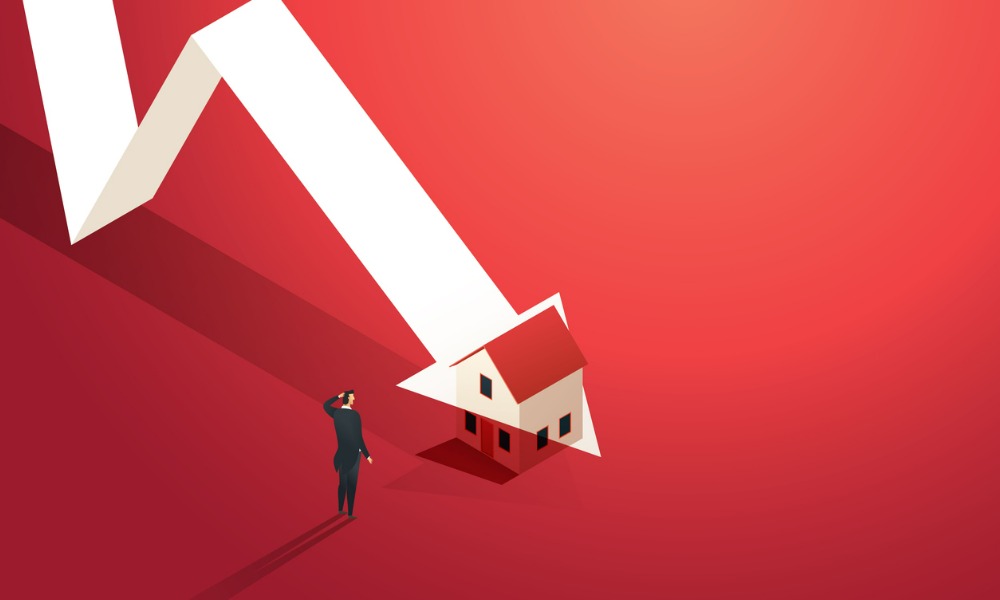Plus: What it means for Australia's largest—and least affordable—markets

Australia is one of the least affordable places to purchase property worldwide. This problem is partly due to cheap mortgages, among other factors. To learn more about how the Reserve Bank of Australia is tackling this issue—particularly in Australia’s largest, and least affordable, markets—read on.
Is Australia’s housing boom nearing an end?
A recent Reuters poll of property market analysts is predicting that skyrocketing house prices in Australia will drop by 8% in 2023 as the cost-of-living crisis worsens and mortgage rates rise. Australia is already one of the least affordable places to purchase property worldwide due to cheap mortgages based on historically low interest rates nearly doubling since the global financial crisis in 2008. Last year alone, property prices rose more than 20%--the biggest increase annually since 1989.
According to the median forecast in the Reuters poll in May, however, that pace will slow to about 1% this year, which is a steep decline from the 6.7% growth predicted in a poll taken the month prior. Prices are forecast to fall 8% next year, which is higher than the 5% projected in the February survey taken by Reuters. “The risk of a crash cannot be ignored given the high level of household debt and that it’s been more than 11 years since the last rate hike,” Shane Oliver, AMP Bank’s chief economist, told Reuters, adding that he expects house prices to fall 10-15% in 2024.
House prices in Sydney and Melbourne are expected to drop between 2.5% and 3% in 2022 and 9% in 2023. In Brisbane, Adelaide, and Perth, on the other hand, prices are forecast to rise between 2% and 6.5% in 2022 but drop 4.5% next year, according to Reuters.
Is the Reserve Bank of Australia hiking the cash rate?
Yes. The Reserve Bank of Australia hiked the cash rate in May for the first time since November of 2010. The cash rate is now 0.35% after the Reserve Bank of Australia raised it by 25 basis points. Australia’s central bank also issued a warning that more cash rate hikes were coming in the future.
Housing market activity could be drastically impacted by a sudden spike in borrowing costs. The effect of roughly 6% of Australian employment being closely linked to the residential construction sector might also cause economic growth overall to slow down.
House prices are also likely to be severely impacted by a sharp spike in mortgage rates leading into 2023. That steep increase in mortgage rates will also heavily affect indebted households, with Australians currently holding a record $2 trillion in outstanding mortgage debts.
That possible price drop should, however, help address rampant affordability issues currently facing those Australians who do not already own a home. Adelaide Timrell, a senior economist with ANZ, told Reuters that it could be something of a positive. “A very large correction in prices would be needed to enable ‘affordable’ housing, particularly in Sydney and Melbourne—though the wage outlook is key to how much of a correction would be needed,” Timrell explained.
That wage outlook, however, is lagging, Reuters reported. Annual pay growth in Australia rose only half the pace of inflation—by 2.4% in the first quarter.
What is to blame for the slowdown to Australia’s housing boom?
Australia’s house price boom is finally starting to slow down after the highest annual growth recorded in 30 years. Sydney and Melbourne, Australia’s two largest—and least affordable—housing markets, have seen price growth of only 0.4% and 0.25% respectively so far this year. That is a far cry from the house prices for those two same markets in 2021, which shot up by 22% last year. That loss of momentum in Sydney and Melbourne has been enough to drag down Australia’s national dwelling value growth, despite the fact that smaller markets such as Adelaide and Brisbane continue to run strong.
Economists forecast a hike in the official cash rate in June 2022, with a rise in the cash rate by 2.15% by June 2023. That would be equivalent to nine interest rate hikes within a year—the fastest pace of increase anywhere in the world.
If the discount variable mortgage rate rose by 2.15% to 5.6%, as has been predicted, it would hike mortgage repayments by a whopping 29%. That would translate to monthly mortgage repayment on a median priced home to rise $744 from $2,599 to $3,344. What that would mean for the average Sydney buyer: a median monthly repayment increase of $1,141. For those median buyers in Melbourne, it would mean a rise of $818.



